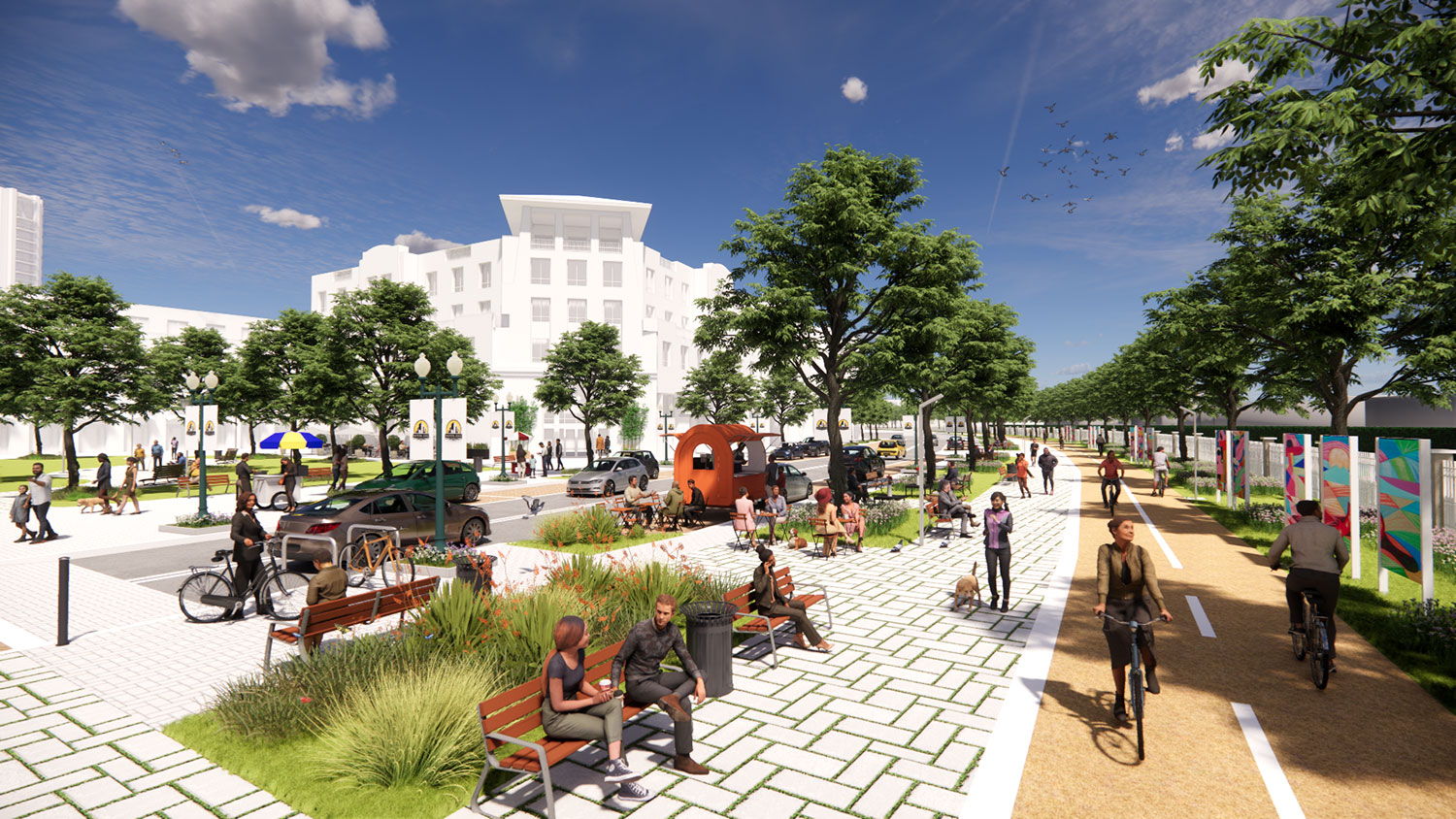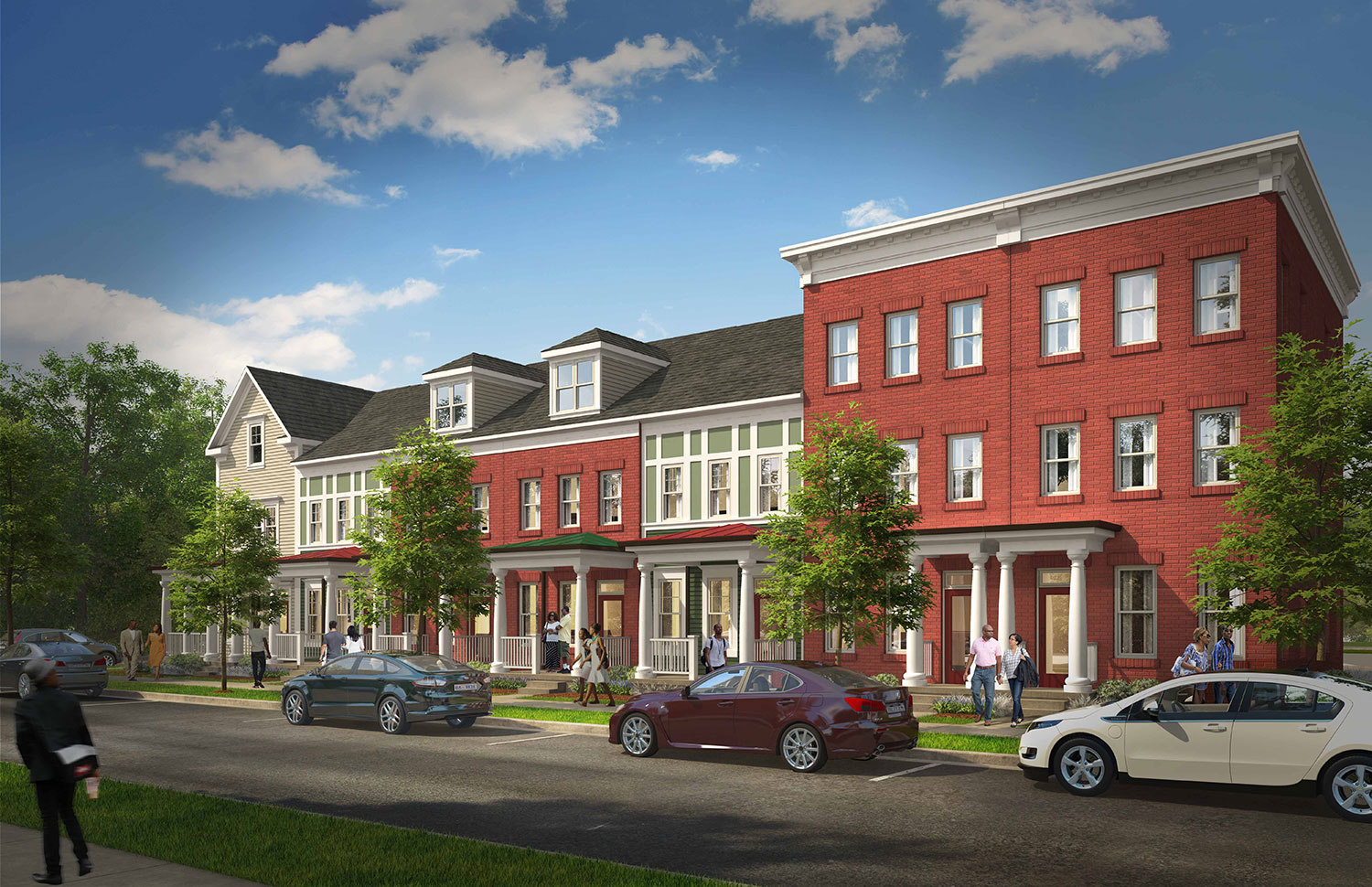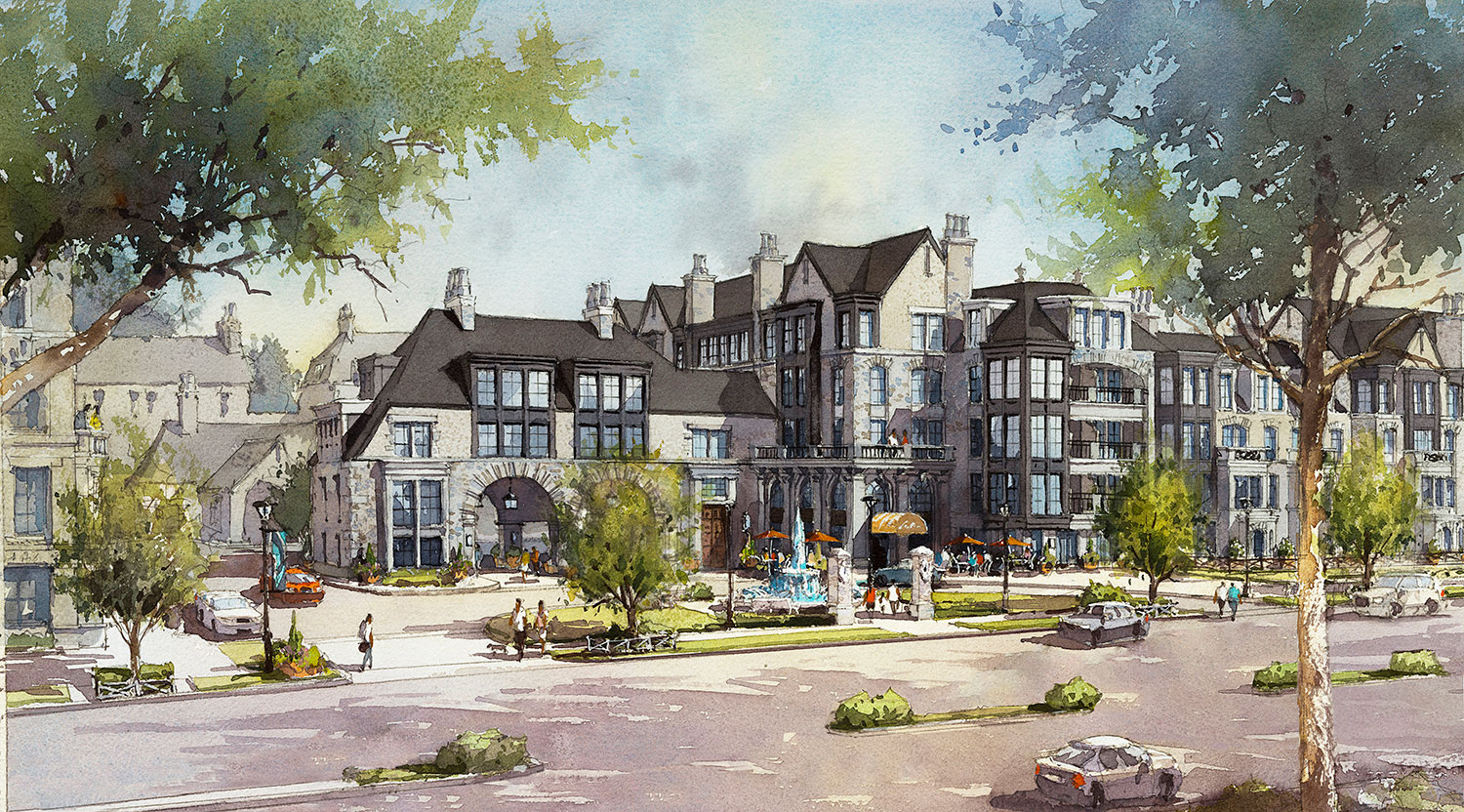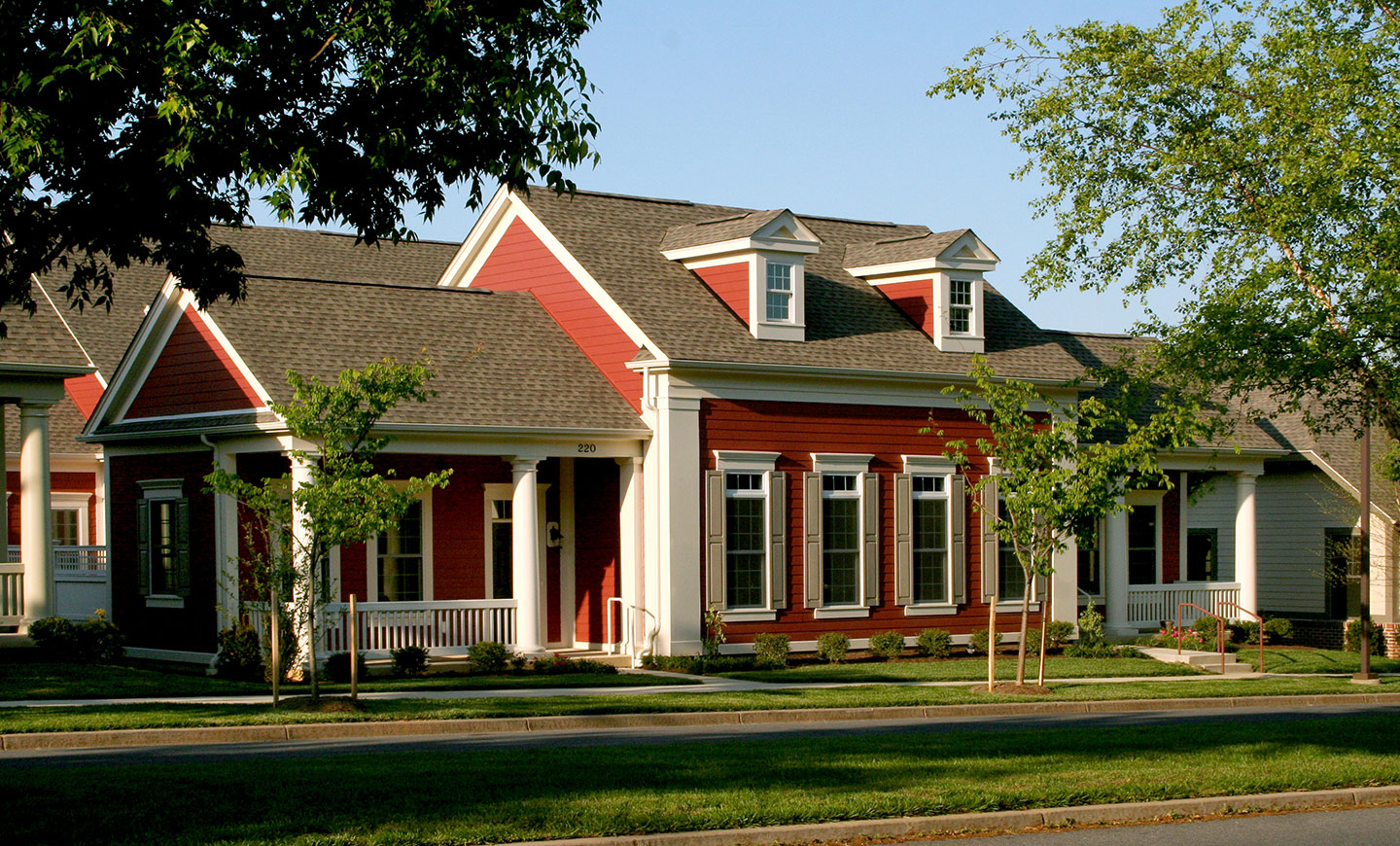
Viva White Oak
Viva White Oak transforms a 300-acre parcel into a world-class mixed-use, transit-oriented village that will have one of the powerful epicenters for bio/life sciences and global health.
290 Acres
Life and Applied Science centered Uses:
2,225,000 SF Research and Development/Laboratory/Applied Sciences Offices/Manufacturing
2,060,000 SF Science Related Educational/Academic/Research/Office
50,000 SF Incubator Space
870,000 SF Clinical/Medical Offices/Ancillary Uses
5,205,000 SF
Amenities Supporting Life and Applied Science Centered Use:
300,000 SF Hotel/Conference Center
1,000,000 SF General Office
510,000 SF Restaurant, Retail, Health, Theatre, Entertainment
75,000 SF Daycare/Senior Daycare and Employee Related Services
Public Facilities
Residential Uses:
835 Age-restricted (55+) Condominiums and Apartments
325 Market Rate Townhomes
3,350 Market Rate Condominiums and Apartments
50 MPDU/Workforce Townhomes
800 MPDU/Workforce Condominiums and Apartments
5,360 Total Residential Units
Developed in close collaboration with Montgomery County and our developer client, Torti Gallas’ design for Viva White Oak transforms a 300-acre parcel into a world-class mixed-use, transit-oriented village that will have one of the powerful epicenters for bio/life sciences and global health. Adjacent to the 130-acre headquarters of the U.S. Food and Drug Administration (FDA) and the new Washington Adventist Hospital (WAH), this vibrant bioscience employment and research center will also feature a variety of housing choices, trails, parks and outdoor spaces, educational facilities, restaurants, shops, and other sought-after entertainment and amenities.
Given its strategic proximity to FDA and WAH, Viva White Oak creates a community of academic, research, clinical, educational and private bio/life science enterprises that is supported by a full range of research facilities, offices, conference facilities, hotels, residences and quality of life amenities. The businesses, educational institutions and residents who will call Viva White Oak their home will be well-positioned for direct interaction for synergistic opportunities. This dynamic setting will enhance opportunities for entrepreneurship, leverage the association with the FDA to foster greater technology transfer, and elevate educational partnerships to build a robust bio/life sciences workforce.
Viva White Oak incorporates the highest standards in sustainable design including:
• Connections to bus-rapid transit that link to the regional mass transit system;
• Photovoltaic solar power installations on the tops of structured parking facilities;
• Low-VOC emitting materials;
• Energy Star appliances and other LEED® building and community designs;
• Potential for “dynamic” (peak) pricing and net-metering, presuming proper governmental incentive policies;
• Community-shared storm water management best practices;
• Community-shared transportation mitigation programs -- including car sharing, shuttle buses, and other alternatives to reliance on single occupancy vehicles;
• Pedestrian and bicycle paths to promote walking and biking to work; and
• A complete mixed-use community with significant residential elements that promote walking to school, walking to work, and other methods to significantly reduce vehicle miles traveled.


What You Do Here Will Make all the Difference
Interested in joining us? Every member of the TG+P team plays a key part in creating a more sustainable world.












